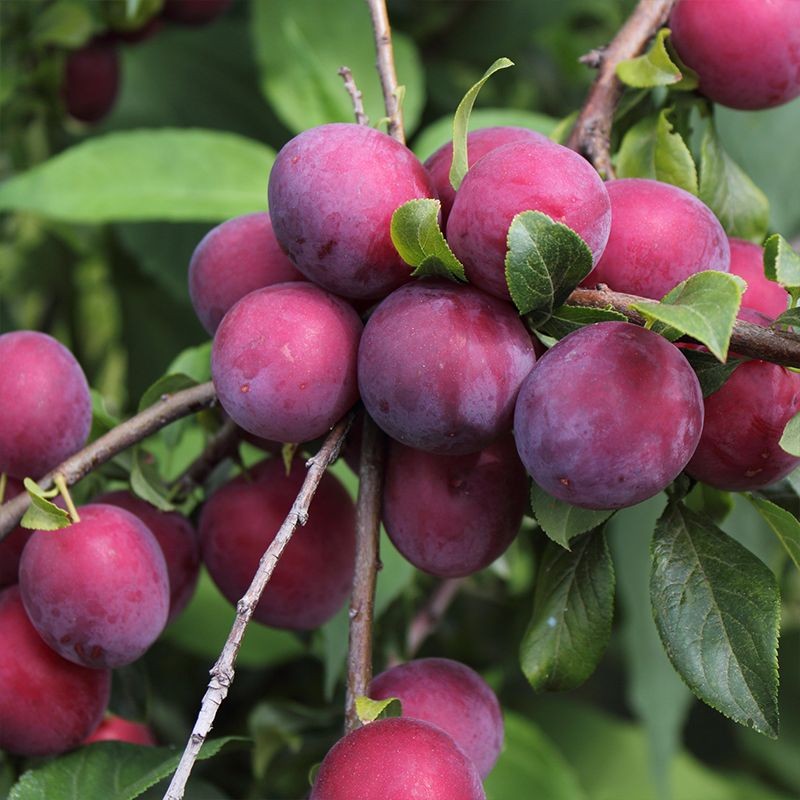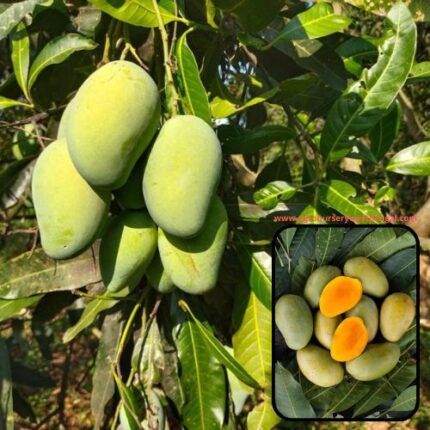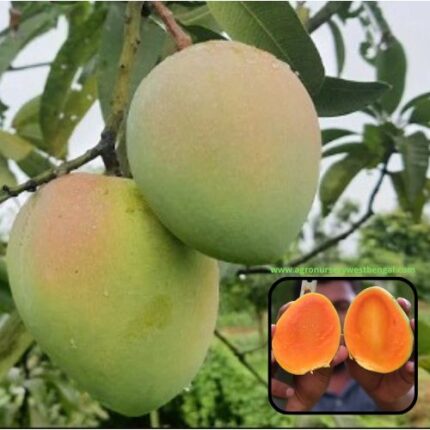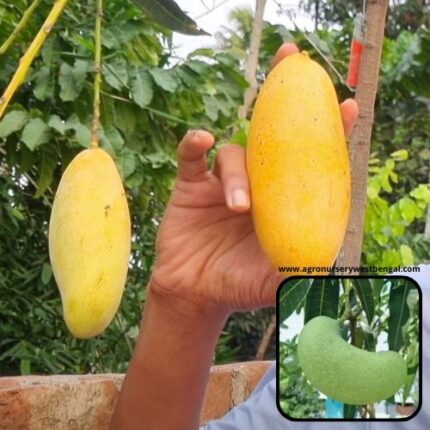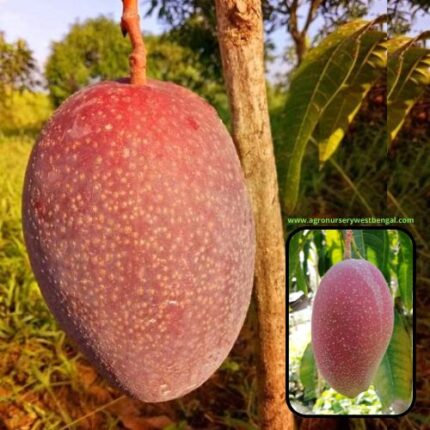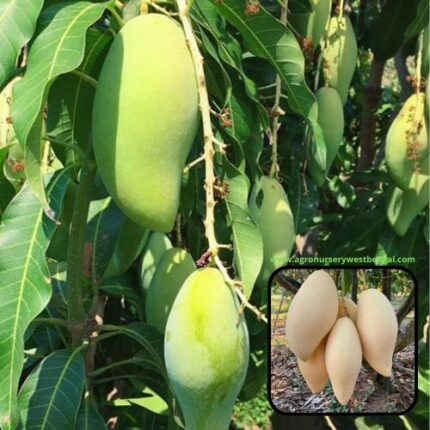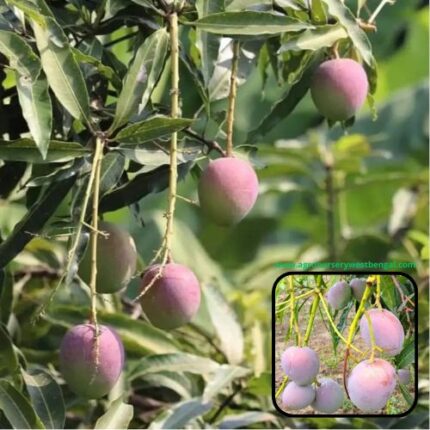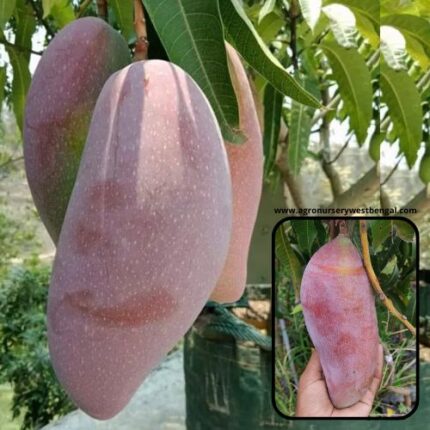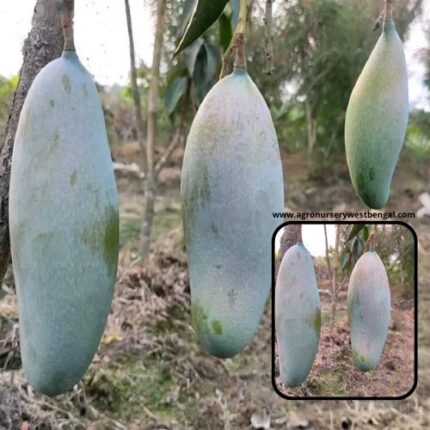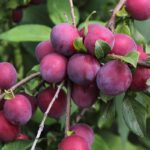
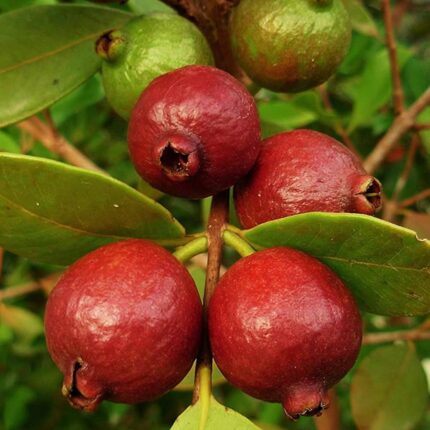
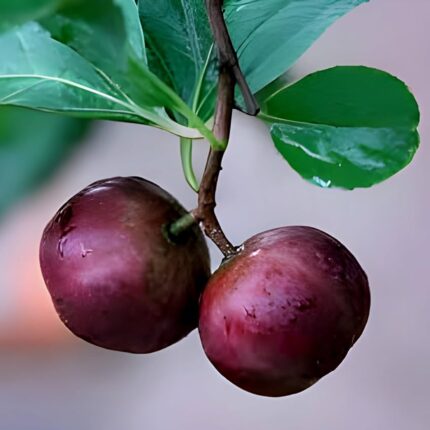
Aloo Bukhara fruit plants
₹899 Original price was: ₹899.₹469Current price is: ₹469.
“Aloo Bukhara” is the Hindi/Urdu name for Plum. It most commonly refers to the fresh fruit, but also to its dried form, which is essentially a prune. While there are thousands of plum varieties worldwide, “Aloo Bukhara” often specifically refers to those types of plums (primarily Prunus domestica and some Prunus salicina varieties) that are widely cultivated and consumed in South Asia, particularly for their sweet and sour balance.
Here’s a detailed description of Aloo Bukhara:
1. The Fruit (Aloo Bukhara / Plum):
- Appearance (Exterior):
- Shape and Size: Aloo Bukhara fruits are typically round to oval or heart-shaped, varying in size from small to medium (usually 3-7 cm or 1.2-2.8 inches in diameter).
- Skin: The skin is thin, smooth, and has a natural waxy coating (bloom) that rubs off. The color varies significantly depending on the specific variety, ranging from red, dark purple (almost black), yellow, green, to amber. Some varieties may have a slight reddish blush over a lighter base.
- Appearance (Interior):
- Flesh: The flesh is juicy, soft, and succulent when ripe. Its color can also vary, from yellow, amber, or green to pink or reddish-purple, often matching or complementing the skin color.
- Seed: Each fruit contains a single, hard, flat, central pit or stone that encases the seed. The flesh can be “freestone” (easily separates from the pit) or “clingstone” (adheres to the pit).
- Taste: The taste profile is a celebrated blend of sweetness and tanginess (sourness). The exact balance depends on the ripeness and variety; some are intensely sweet, while others have a more pronounced tartness. The flavor is distinctively fruity and refreshing.
- Aroma: A ripe Aloo Bukhara often emits a delicate, sweet, and fruity aroma.
2. The Plant (Plum Tree – Prunus domestica or Prunus salicina varieties):
- Growth Habit: Plum trees are deciduous fruit-bearing trees that can range from small shrubs to medium-sized trees, typically growing 6 to 10 meters (20 to 33 feet) tall, depending on the variety and rootstock. They often have an attractive spreading canopy.
- Leaves: The leaves are simple, alternate, oval-shaped, and serrated along the edges, typically green in color.
- Flowers: Plum trees produce beautiful white or pink blossoms in spring, often before the leaves emerge, creating a lovely display.
- Climate & Cultivation: Plums generally thrive in temperate climates with distinct cold winters for chilling hours and warm summers for fruit ripening. However, some varieties (like certain Japanese plums) can adapt to warmer regions. They prefer well-drained, fertile soil.
- Seasonality: Fresh Aloo Bukhara (plums) are typically a late spring to summer fruit, with harvest times varying based on the region and variety.
3. Uses:
- Fresh Consumption: Aloo Bukhara is most commonly enjoyed fresh, straight off the tree, or as part of fruit salads. Its easy-to-eat nature makes it a popular snack.
- Dried Fruit (Prunes): When dried, Aloo Bukhara becomes a “prune.” Dried plums are a popular snack and a common ingredient in many cuisines.
- Culinary Applications:
- Sweet Dishes: Jams, jellies, preserves, compotes, pies, tarts, crumbles, cakes, smoothies, and juices.
- Savory Dishes: In South Asian, Persian, and Central Asian cuisine, Aloo Bukhara (especially the dried form) is frequently used in savory dishes like biryanis, pulaos, meat curries (e.g., Khoresht Aloo Bokhara in Persian cuisine), and chutneys. Its sweet-sour taste adds a unique depth and tanginess.
- Traditional Uses: In some traditional practices, dried Aloo Bukhara is used to alleviate issues like constipation and morning sickness.
4. Nutritional Value and Health Benefits:
Aloo Bukhara is a highly nutritious fruit:
- Vitamins: Rich in Vitamin C (a powerful antioxidant for immunity), Vitamin A (beta-carotene, good for vision and skin), and Vitamin K (important for blood clotting and bone health). It also contains some B vitamins.
- Dietary Fiber: High in dietary fiber, which is excellent for digestive health, promoting bowel regularity, and preventing constipation (especially true for dried plums/prunes due to compounds like sorbitol and isatin).
- Antioxidants: Packed with various antioxidants, including anthocyanins (responsible for red/purple colors), flavonoids, and phenolic compounds. These help combat free radicals, reduce oxidative stress, and may lower the risk of chronic diseases.
- Minerals: Provides potassium (for blood pressure and heart health), magnesium, iron, and some calcium and phosphorus.
- Low in Calories: A healthy, relatively low-calorie fruit, making it suitable for weight management.
In essence, Aloo Bukhara is a versatile and flavorful fruit, prized not only for its refreshing sweet-sour taste but also for its significant nutritional and health benefits

